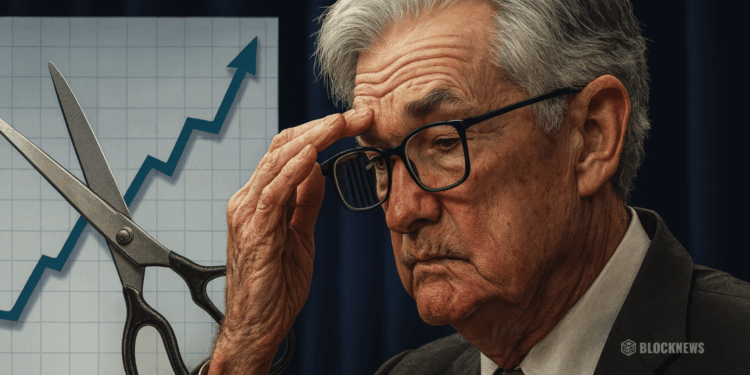- Futures now price an 86% chance of another Fed rate cut in October.
- The Fed’s dot plot projects two more cuts in 2025, but Powell remains cautious.
- New Fed Governor Stephen Miran dissented, pushing for steeper cuts aligned with Trump’s demands.
The Federal Reserve cut its benchmark interest rate by 25 basis points on Wednesday, lowering the federal funds rate to 4.00%–4.25%. Policymakers signaled they plan to reduce borrowing costs steadily for the rest of 2025, citing signs of labor market weakness. In response, futures on the federal funds rate jumped, with traders now assigning an 86% probability of another cut at the October meeting, up from just 71.6% before Wednesday’s decision.
The Dot Plot Shows a Dovish Tilt
The Fed’s updated “dot plot” projects two more rate cuts this year, compared to the June forecast of just 50 bps in total easing for 2025. It also outlines a single 25-bp cut each in 2026 and 2027. But the new projections raise questions: Fed Chair Jerome Powell called Wednesday’s move a “risk management cut”, suggesting there’s no urgency to cut aggressively. Economists flagged inconsistencies between the dovish dots and the Fed’s own inflation and unemployment forecasts, which don’t align neatly with faster rate reductions.
Market Doubts and a Lone Dissent
Not everyone agreed with the Fed’s measured approach. New Governor Stephen Miran, sworn in just a day before the meeting, dissented in favor of a deeper 50 bps cut. His dot plot entry was the most aggressive, penciling in a 2025 rate of 2.875% — 75 bps below any other Fed official’s projection. The move aligns with President Trump’s push for steeper cuts to boost growth ahead of 2026. Markets are also factoring in roughly 70 bps in cuts for 2025, signaling skepticism that the Fed will stick to its more cautious path.
Inflation, Jobs, and the Fed’s Balancing Act
The Fed faces a delicate balance. Inflation is holding at 2.9%, still above target, while revised labor data revealed the U.S. created 911,000 fewer jobs over the past year than previously reported. The new projections suggest Fed officials increasingly believe they can cut rates faster without triggering higher unemployment, even if inflation only eases slowly. But as Natixis economist Christopher Hodge noted, this strategy could risk keeping inflation elevated into 2026.














